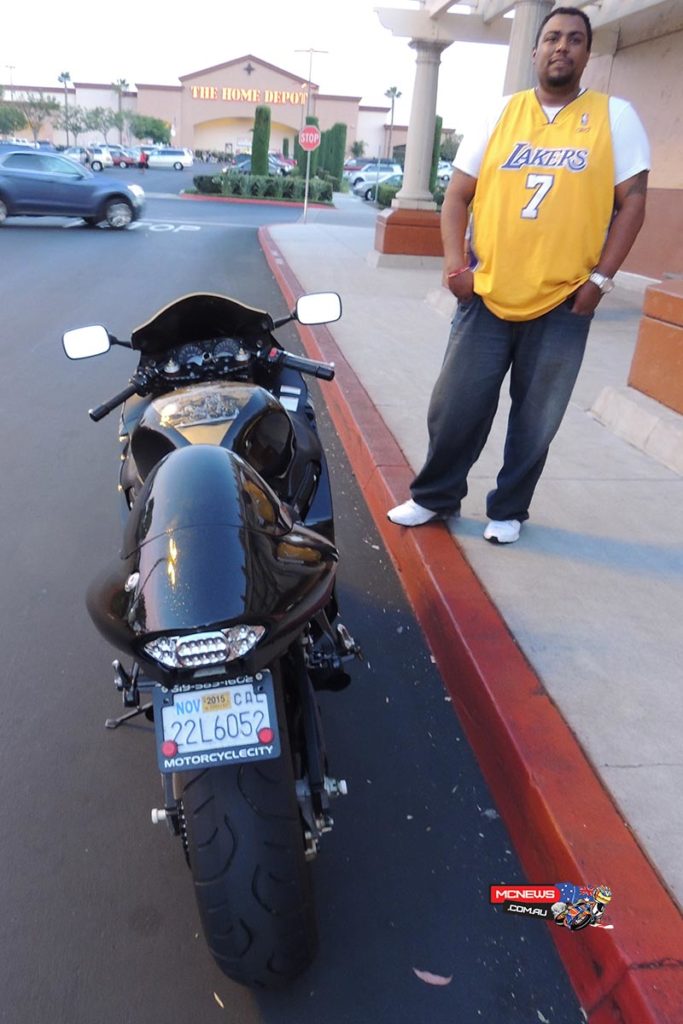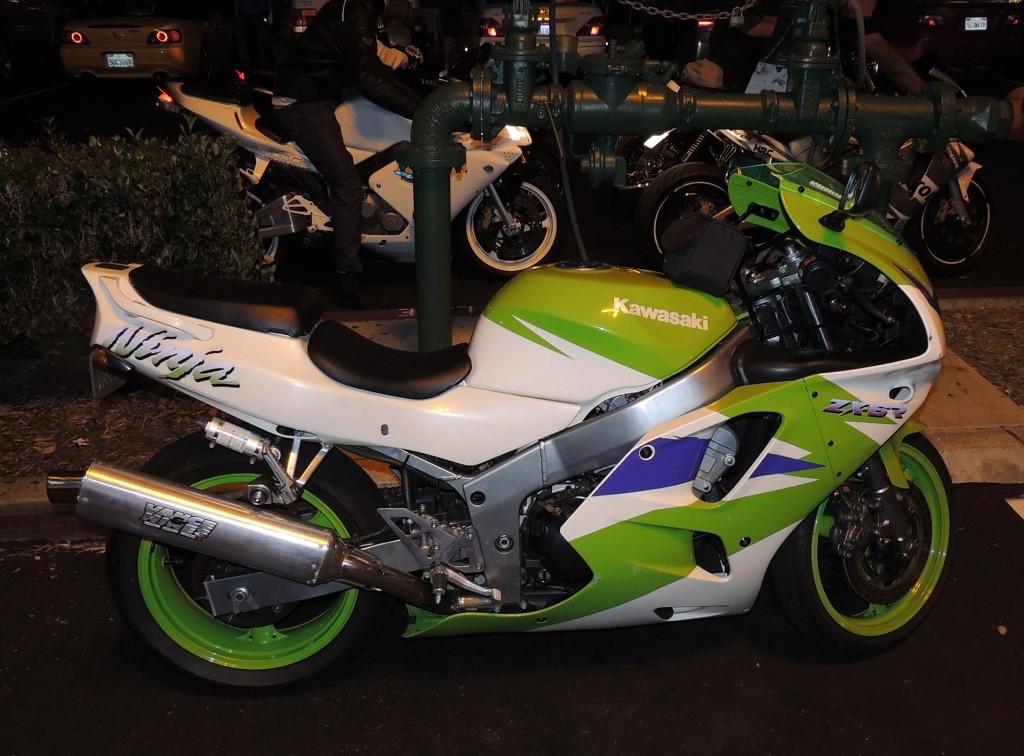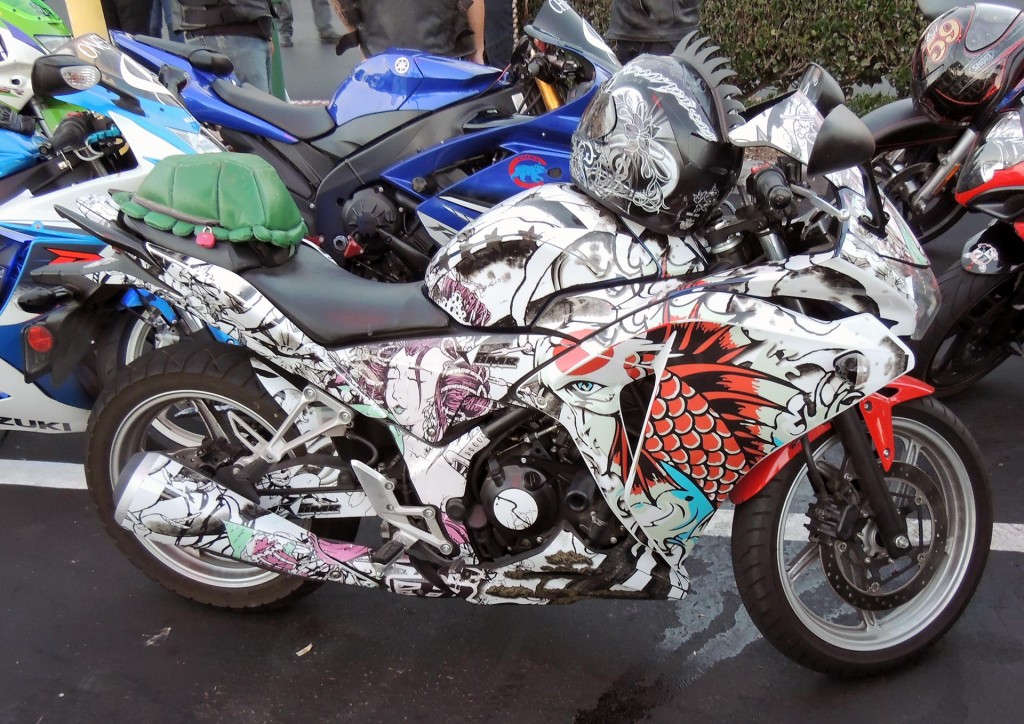On the other side
Phil Hall takes a look at American motorcycle culture while visiting California
When I first decided to go to the USA to visit our our daughter and grandchildren, I knew that there would be all sorts of things that I would find fascinating. The food, the weather here in California (it’s 27 degrees here – every day – winter? What winter?), the history, the architecture, the cars and the people, just to name a few.
The one aspect that I was confident was going to be pretty much the same was the bikes. After all, 90 per cent of them were going to be Japanese and the only tangible difference between us and our American cousins would be that they were ridden on the other (wrong) side of the road.
Now I’m not a globe-trotter so some of what I’m going to say this week will seem pretty trite to those who travel the world, meet new and interesting people and write about it for someone else’s entertainment and edification. So please forgive me if my article fails to break any new ground.
My presumptions about motorcycling, then, were pretty right, but not quite in the way that I expected.
So, firstly, yes, there are a LOT of Harleys on the road. But not as many as I expected. In fact, there are nowhere near as many bikes on the road, full stop. And it isn’t as if the weather is not conducive, either. We are staying in San Diego in Southern California, and you simply could not find better biking weather no matter where you looked.
Filtering is allowed but lane-splitting (riding between the traffic while it is moving,) is not, not that you would know it. The freeway speed limit is 65 but everyone belts along at 75 (120km/h) and the police seem to turn a blind eye. Lane splitting on a 7 lane freeway at that speed, no matter how wide the lanes are, and they are wide, still seems a bit extreme for me.
As well as being consistently warm during the day, the night time temperature only drops to 17-18 degrees and is accompanied by a consistent cool breeze that makes sleeping a pleasure and makes for perfect night-time riding conditions as well.
So, where are all the bikes?
The roads around San Diego are spacious and wide, 7 or 8 lanes going in each direction and spreading across the landscape as far as the eye can see. The countryside, contrary to what I had expected in So Cal, is quite hilly though the effect of this is somewhat negated by the freeway network that has basically modified the landcape to suit its own needs.
There are few high-rise shopping centres and apartment blocks except in the bigger regional centres and the downtown San Diego city precinct (about 20 minutes to the south of where we are staying). There is just so much space that building UP just isn’t necessary.
Shopping centres are mostly strip malls, a huge collection of one storey buildings arranged around a central car park, and, like everything in America seems to be, they are BIG.
There is one such mall across the 6 lane suburban street from my daughter’s apartment and it was here, last Thursday night, that my question about where all the bikes were, was answered.
Apart from the occasional bike blasting by (a lot of them being 250’s with modified exhausts – few things sound sillier) the rumble of a Harley or two is all you will hear during the day in Mira Mesa. BUT, come the night time, the scene changes.
I am certain that this is due to peoples’ work commitments just like it is at home (there are two massive military establishments nearby, the mini city that is Camp Pendleton, home of the US Marines, to the immediate north and an Air Force base to the south where you can see all manner of aircraft exotica landing and taking off.) Then there is the naval aviation base in the main harbour right next to the city itself, home of the USS Midway (now a floating museum), and at least two serving aircraft carriers at any given time.
So the population is disproportionately skewed towards service personnel. And this is possibly part of the reason why the bike scene picks up in the evening. The locals DO seem to think that it is very hot at the moment, though what they have to complain about is anyone’s guess – to me the weather is perfect. Their brothers and sisters in Nor Cal are sweltering in 38 degrees plus so I really don’t understand the fuss.
Anyway, back to the bikes. Shops stay open to ridiculous hours here (a book shop nearby is open till 2100 every day and a dress shop immediately behind us opens to 2300 from Thursday to Sunday night, much to my wife’s fascination.) So the other night we took a walk across the road to explore in the cool of the evening and to hopefully scare up a cup of coffee – sadly the Americans know NOTHING about coffee – I have yet to even FIND a shop that knows what a cappucino is, let alone one that can make one for me.
As we were returning home I heard the sound of an obviously unmuffled Japanese four and I saw a custom-painted Hyabusa being ridden by an equally large black man in a basketball shirt and no helmet heading across the car park . He pulled in to the kerb, hopped off the bike (he made it look like a 250) and ambled over to a video vending machine. I wandered over to the bike and had a look. There had obviously been copious amounts of money spent on it so I waited till he came back and said hi.
For all their faults, the Americans have two outstanding characteristics which they always seem to exhibit. One of them is that they are fiercely patriotic. The other is that they are unfailingly polite.
I introduced myself and the rider, whose name was Antoine, called me “Sir” and started explaing about his bike. It’s a 2007 model, the last of the “unrestricted” ones and it has been bored out to 1400cc and has all manner of go-faster bits. It is capable, he assured me, of well over 200mph. The custom paint job is predominantly a metalflake black with yellow graphics and pin-striping. It looked expensive but Antoine explained that he has a friend who owns a panel shop (everybody except me seems to know someone who owns a panel shop), and his buddy had done the job for a good price.

Antoine explained that he was a youth pastor at a local church and this helped to explain the obviously Christian graphics all over the bike and the Bible verse pinstriped onto the tank. The exhaust was a stubby pipe (no muffler) that ended just below the rider’s right footpeg. I never did get to hear it howling, but it was impressive enough at idle for me to get the right idea. Apparently his local bike group have a group ride every Thursday night and some of them were gathering on the other side of the car park as we were speaking.
So we toddled over and had a look. What a cornucopia of motorcycles. There were about 20 bikes, an impressive number, but it grew while we were there to be more like 40 and, as Antoine explained, it would be much more than that (usually around 200) by the time they linked up with the “southern” group a little later that evening.

They ride the canyons and the twisty road to the south west of where we were staying and also terrorise the freeways, having wheelie competitions and generally “hooning”. A Thursday night ride is usually around 100 miles (160kms) and is accomplished at whatever speeds the riders feel like doing.
Most of the bikes were sportsbikes but there was also some Harleys, some dirt bikes and some learner bikes. Most were modified, some heavily, and some looked like they’d just rolled off the trailer at a road race meeting. I started picking Antoine’s brain. I first asked about the open exhausts being fitted to many of the bikes. He explained that many of the bikes (it seemed like MOST of them to me) would not be strictly legal in the over-protective state of California. Many did not have indicators or mirrors either and he said that a lot of riders will carry a mirror and a set of stick-on indicators in case they are pulled over and given what he called a “Fix it” ticket. Police apparently give time to refit the standard muffler in these instances.
LED illumination seemed to be common, “bling” being well in evidence. There seemed to be a disproportionate number of female riders, also on highly modified machinery. The ethnic mix was also fascinating with black and Hispanic riders dominating (San Diego has a strong Spanish/Mexican mix especially as it is just a stone’s throw from the border).

The one thing that did NOT surprise me was the friendliness. Like at home, any motorcyclist is an instant friend and conversation was easy and enjoyable.
Opinions on riding gear seemed widely divided also ranging from proper textile jackets, Draggins and boots, jeans and a cut-off denim jacket all the way to t- shirts and joggers. Strangely, not one single rider was wearing leathers.
Soon the group saddled up and, to the sound of many bikes being taken to the limiter, they blasted off into the night.
In a scene that I guess is repeated all over the world in similar fashion, I was inducted into the way that motorcyclists bond and share their passion for things two wheeled.
Last night I went back again and spent a couple of hours getting to know the characters a bit better. As with everything else that I have noted here, bikes and accessories are cheaper than at home with second hand bikes being ridiculously so. One of the girls there had just bought a CBR600 F4i, in excellent condition with a Vance and Hines pipe for $2000.
Terrorising the canyons at illegal speeds is not my thing, but I felt an affinity with the riders like one always does. As the smell of burnt fuel and the sound of bouncing valves receded I went back across the road confident in the knowledge that, if you can’t ride, the next best thing you can do is to TALK about riding with other riders.
It is not motorcycling-related (except for the fact that the man is a keen motorcyclist who has ridden with the legendary Malcolm Smith) but my time spent talking to Land Speed Record contender, Danny Thompson (son of Mickey Tompson of Challenger I fame) has been one of the highlights of my visit so far.
It seems that motorcyclists ARE the same no matter where you find them. I already knew that, of course, but it’s fun to find it out again.
Phil Hall.























